How to Learn to Do a Headstand
A headstand (Sirsasana) can be made with or without wall support. In this position, the body is held upright with an emphasis on the forearms, while the crown of the head slightly rests on the floor. This pose is considered difficult and has a number of contraindications, which is why you shouldn’t forget to consult your doctor before performing this exercise.
5-Minute Crafts invites you to study the steps that will help you do a headstand. Only under the supervision of an experienced coach should you try making this pose.
Warm-up strengthening exercises
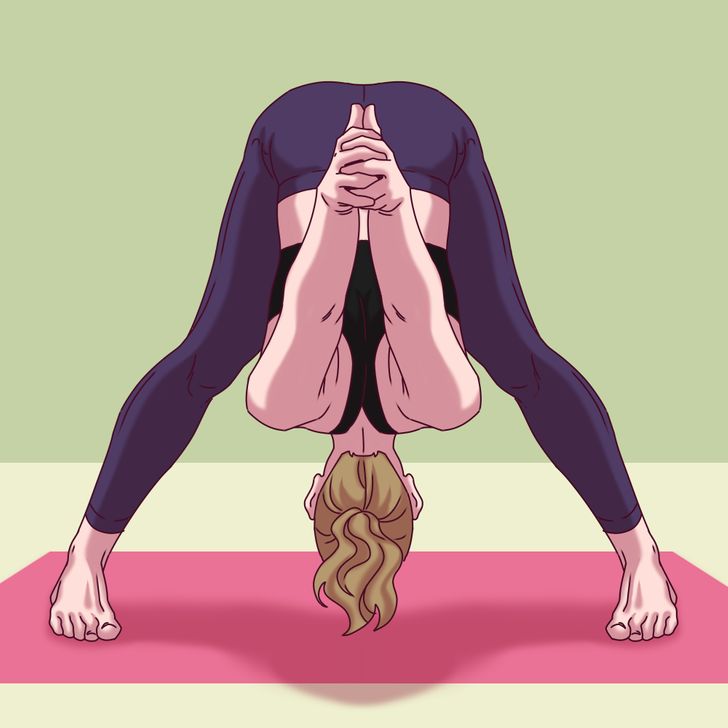
1. Bend forward with the legs widely spread apart.
- Stand so that there are about 3 feet between your feet.
- Slightly point the toes inward. Lock your hands behind your back. Inhale.
- As you exhale, bend forward as low as you can. Keep the spine straight. Stretch your arms toward the floor. Stay in this position for a while. Along with another exhale, try to make each following bend even deeper.
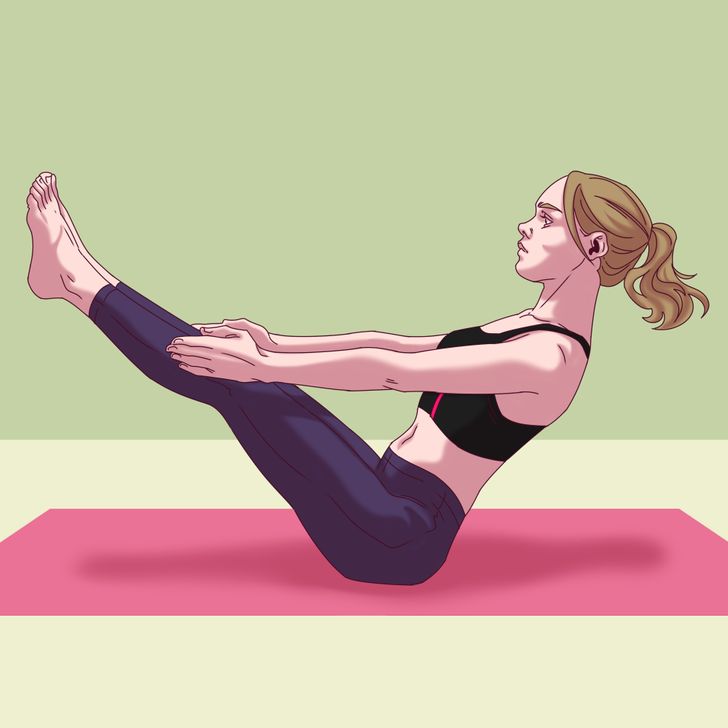
2. Boat pose
- Sit on a mat. Straighten your back and look forward.
- Pick your legs up off the floor — they should be straight. Make sure your spine is straight too. Extend your arms out in front of you. If you find it hard to do this exercise, you can bend the knees or lean on your hands from behind.
- Be mindful of your breathing. Stay in this pose and inhale deeply 5 times.
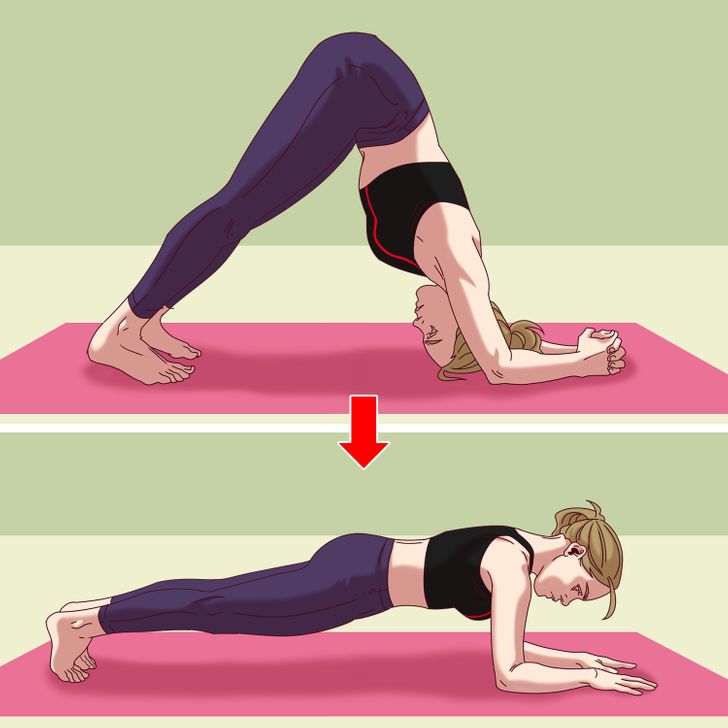
3. Dolphin plank pose
- Take the pose of a dolphin. Get down on all fours, resting on your knees and forearms. Place your forearms so that they form a triangle, and clasp your hands together. Push your pelvis up, straightening your legs. Lift your heels slightly off the floor. Move your feet closer to your hands. You should feel a stretch in the back of your legs and back. Lower your head completely down and direct your gaze to your legs. Hold this pose for a while.
- Then lower the back and walk your feet back until your shoulders are directly over the elbows and your torso is parallel to the floor. You should stand in a plank while resting on your forearms and feet. Make sure that your waist area doesn’t sag. Look at the floor. There should be no tension in the neck.
- Stay in this position for anywhere from 30 seconds to 1 minute. Then kneel down as you exhale.
The order of steps to do a headstand
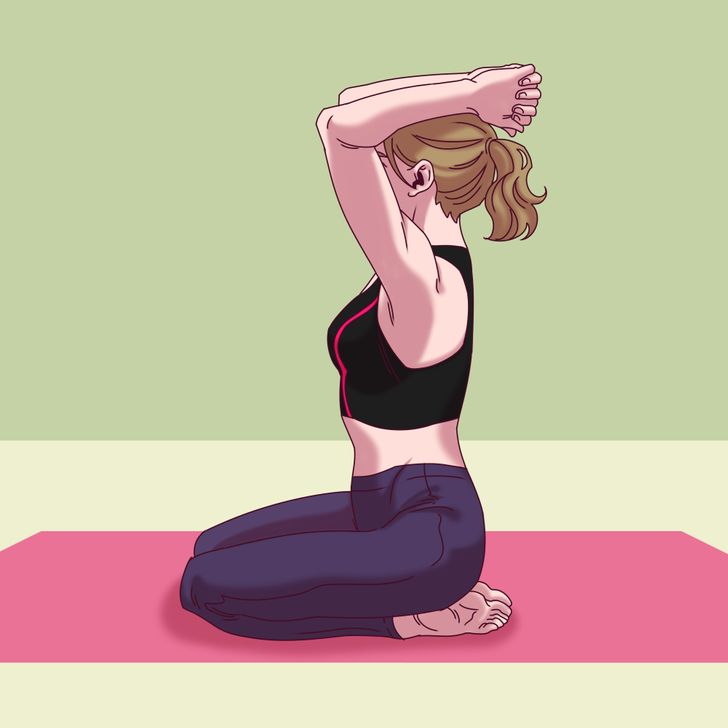
1. Learn the position of the arms.
- Imagine that you’re holding a tennis ball in your hands.
- Place your arms on the head so that the top of your head gets squeezed between your forearms.
- Tighten your shoulder blades, lower your shoulders, and engage your deltoids. This is how the shoulder girdle should feel when you stand upside down. Most of your weight should be on your forearms, not your head.
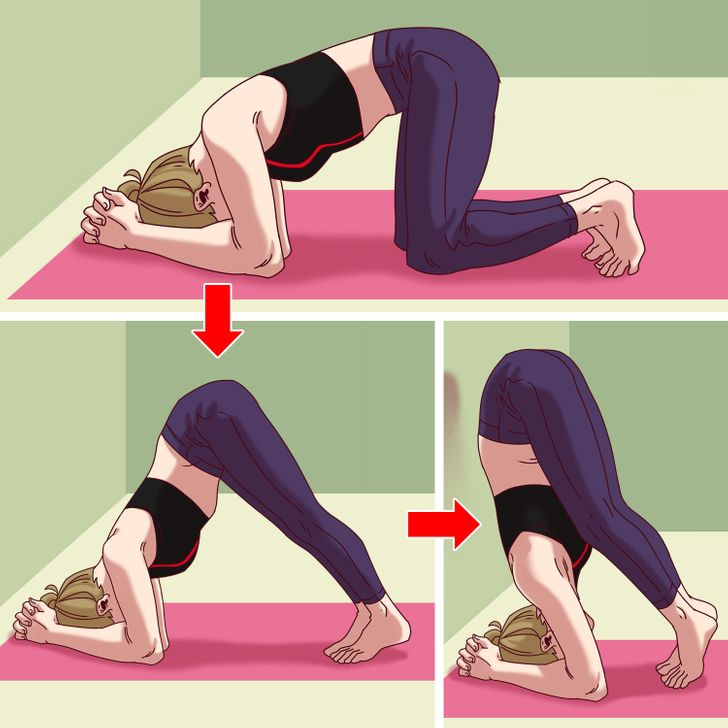
2. Start doing the exercise.
- Get on all fours and place your forearms on the mat. Please note that the mat should not be slippery. As you learn how to do it, use a wall as support. Place your hands 4-6 inches away from it.
- Put your head in the same position you’ve learned before — it’s high time to started putting your knowledge to practice.
- After this, get into the dolphin pose, but keep the head resting against the floor. Pull the tailbone up, straighten your legs, and lean on the toes of your feet.
- Gradually walk your feet closer to the head. You may feel like you’re about to fall, but the emphasis on your forearms won’t let you do it.
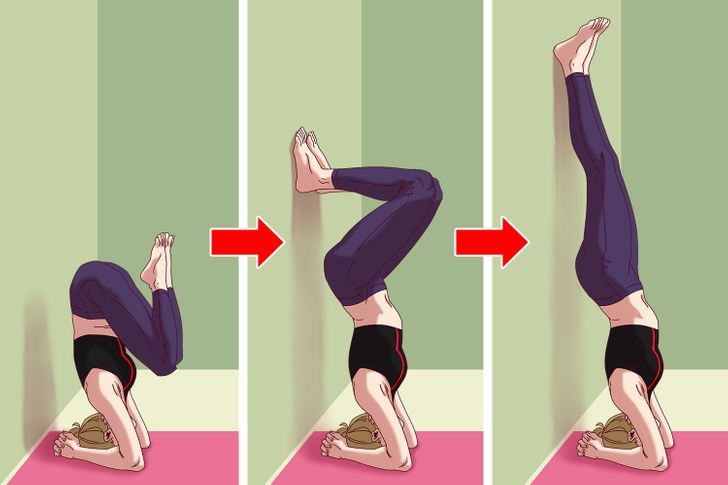
3. Lift your legs.
- Lift your feet off the floor and bring your knees to your chest. Hold this position briefly to gain balance.
- Lift your knees up and place your feet on the wall.
- Start to slowly lift your feet higher and higher until your legs make a straight line. Feel your body in this position. Stay in this pose.
4. Exhale.
- Bend your knees gradually, moving your feet down along the wall.
- Move your feet off the wall and bring your knees to your chest.
- Place your feet on the floor and get down on your knees.
- Slowly lift your head and straighten your shoulders.
💡 Once you feel confident in your strength, you can take your feet off the wall for a while. Over time, you won’t need any support, and all your movements will become automatic.
Variations of a headstand
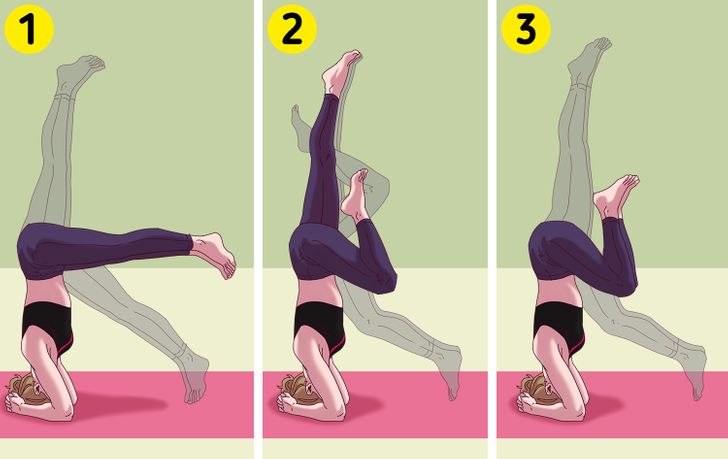
You can try playing with different variations of how to enter and exit a headstand.
- With straight legs: Press your legs tightly to each other and stretch them in one line. In this position, lift them up and lower them in the same way.
- With split legs: Bend your legs and bring them to your chest. Then straighten one leg and the second leg after it. The exit is done in the same way — one leg after the other.
- With bent knees: First, bend your legs and pull them into your chest. Then straighten both legs simultaneously. Move them down the same way you lifted them up.
💡 Consider the variation with straight legs as the safest.